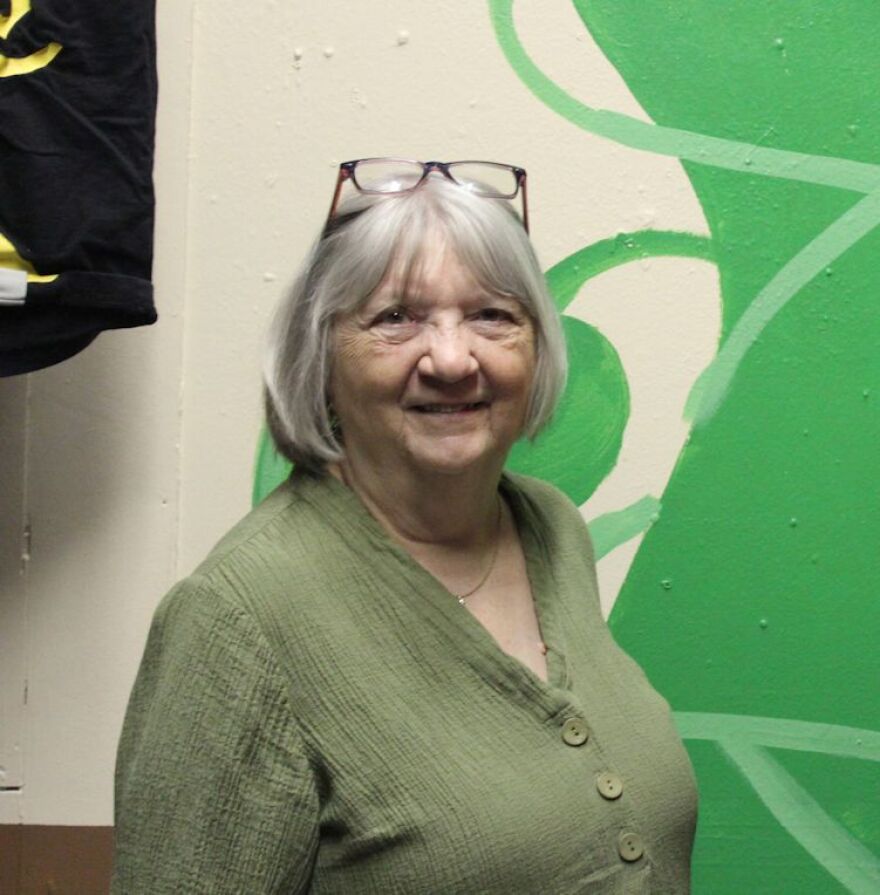It was 1993 and the citizens of LaBelle faced a dilemma. The dinner theater just east of town had closed unexpectedly.
No more comedies?
No more dramedies?
No way.
The suddenly stageless actors sprang into action.
“We didn't really want to see the theater die here,” recalled actor-director Janice Groves. “You know, once you get onstage, you kind of get the bug and … it just doesn't go away. So we just worked really hard. We got the whole city involved. It was exciting to think that we could do something like that in LaBelle.”

Their first order of business was to find a home.
“The city of LaBelle had this particular location. It was vacant,” explained Groves. “They didn't know what they were going to do with it. They were actually thinking about selling the building. We went to the city and they agreed to let us use it for our theater.”
That location was the old, historic fire station, hence the name: Firehouse Community Theatre.
“It was just a big room with green plastic chairs,” Groves said. “When we first came into the building, the only bathroom in the building was on the stage.”

As director Mike Shough recounts, that created some interesting interludes.
“We actually had one lady come on stage during a play to use the restroom. We had to shoo her off because the play was going on.”
Firehouse Community Theatre has come a long way since then.
New lobby. Men’s and women’s restrooms. Eighty plush seats on risers. A spacious green room and dressing rooms for the actors. And a sound attenuation system compliments of NASA.
For Firehouse Community Theatre, it’s truly been a journey marked by resilience, resourcefulness and ingenuity.
Firehouse enters its 33rd season with an enticing schedule of comedies and a musical revue featuring the Firehouse Singers.

MORE INFORMATION:
The nucleus of people who started Firehouse Community Theatre was composed of former actors at the dinner theater that closed in 1993.
“We got together and did the paperwork needed to form a nonprofit and we got our 501(c)(3) [status from the I.R.S.],” founding member Janice Groves recalled.
Some accounts state that when she heard what the organizers were doing, Mayor Sherri Craichy informed the group that the old fire station owned by the City of LaBelle was sitting empty and might be utilized as a theatre. Groves said that the organizers proposed that the city lease them the old firehouse, which had been vacant for several years.
Either way, it took considerable effort to put the building back into repair.
“When we first came in, it was a mess,” Groves recalled. “They didn't clean up after the tire company left. So we just rolled up our sleeves, cleaned, cleaned, cleaned, and did our first play [“Divorce Southern Style”] within six weeks after taking possession of the building.”
As there was no lobby, patrons just came in and sat in one of several flimsy green plastic chairs that were arranged in rows on the flat concrete floor.
After that one patron tried to use the restroom located on stage in the middle of a performance, the theater brought in portable toilets. But an even bigger problem was noise infiltration from cars, trucks and motorcycles driving along Bridge Street.

“We kept the building as close to looking like a fire station as we could,” said Groves.
That meant keeping the red overhead doors.
“When we first started, the street noise was terrible,” Groves observed. “NASA used to have - I don't know if they still do it or not - but they used to have a program where they would work with small businesses to solve issues that were causing problems with their business. The noise was a problem here, so we notified NASA. They got with our people here and came up with a way to insulate the doors to eliminate most of the noise from the street. So NASA had a hand in the success of our theater.”
The theater did not attract many patrons that first year. For some of the theater’s earliest shows, there were barely four or five people in the audience.
“We didn't have any of the amenities that we have now,” said Groves.
Groves and her compatriots were undeterred.
“That first summer, after we finished our season, we built the lobby on the front that has the bathrooms and the little concession area front,” Groves reported. “Over the years, we have also added new lighting, sound and the stage curtains.”
Just last year, they also added three dressing rooms, a green room and a restroom for the performers to the rear of the stage.
The theater started with 67 seats. It now seats 80 comfortably.

“The seats are actually seats that were used in some of Lee County's civic offices,” Shough said. “They were doing some remodeling, and our sheriff at the time, Tommy Vaughn, got them to donate the seats to us. We’ve been using those ever since.”

All of the seats are close to the action.
Sometimes, too close.
“In one of our productions, we had a vase that had to drop on the back of our stage at a certain point in the show,” Groves said. “We wrapped it in plastic so that when it dropped and shattered, the glass wouldn’t go everywhere. Well, one night the wrapping came off the base and when the vase shattered, a piece of glass hit a lady in the front row right between her toes and she actually bled. So we've made one audience member bleed!”
“But we apologized and gave her a little popcorn,” Shough interjected. “She was fine.”
Although the theater has made many improvements over the years, the building has neither a rehearsal space, set shop or room for storage.
“So the city has provided us with another building,” said Shough. “It's the old licensing building where you would get your driver's license. We fixed it up and made the stage exactly the same size. So while one play is going on, the next play is practicing there. It's just across town. It's not very far, and that has worked out wonderfully for us. The city has been big supporters of ours.”
“We love the city of LaBelle. They've been wonderful to us,” Groves added. “We're also glad that the fire station happens to be within the new designated historic district of LaBelle.”

While Firehouse Community Theatre has overcome numerous physical obstacles, what limits the nature and size of its productions currently is the dearth of male actors in LaBelle and surrounding locations.
“We have a lot more ladies than we do gentlemen, so we try to do plays with five, around five, people, sometimes up to 10, but three, four, five and more ladies than gentlemen is what we usually do,” Shough said. “It's just the way it is. Some small playhouses only do plays with ladies. They don't do shows with male characters because it's just the way it is.”
One way the theater is trying to overcome this disparity while simultaneously attracting younger actors and audiences is through its summer programs for children.
“We started early with them,” said Groves. “We just felt after we got established that we needed to do something for the youth in the area. So we started children's theater in the summer just as soon as school's out. The kids do a play, they work on their own costumes, they work on their own set. They do everything other than write the play. Then because there were so many kids who wanted to be involved, we divided the program into two sessions, one for the younger kids and the other for those who are older, who are in high school.”
Progress has been incremental, but steady.
“When patrons return for each new season, they usually find some kind of a new surprise,” said Groves. “It’s a good reason to keep coming back.”
Seasons slant heavily towards comedies, but there’s an occasional musical, talent nights and variety shows.
“In the past, we've done ‘Little Shop of Horrors,’ ‘Arsenic and Old Lace,’ ‘Steel Magnolias,’ which we just did last season for the fourth time,” said Groves. “We've done it four times. Our audience like the fact that they maybe have seen the play someplace else and they want to come and see how we do it.”
Firehouse Community Theatre is located at 241 N. Bridge St. It continues to operate exclusively through volunteers under the slogan, “It’s not Broadway. It’s Bridge Street.”
For more information, telephone 863-675-3066 or visit firehousecommunitytheatre.com.
Historic District and Landmarks
The Downtown LaBelle Historic District is listed on the National Register of Historic Places.
LaBelle was originally platted in 1895 by Captain Francis A. Hendry, a prominent cattleman and landowner who is also known as the father of Fort Myers. Consisting back then of a post office, general store, school and a church, LaBelle became the first town and commercial center in what became Hendry County.
Although Hendry is credited with settling LaBelle, E.E. Goodno (1858-1936) is recognized as the “Father of LaBelle.”
The Downtown Historic District extends along and near Bridge Street from the Caloosahatchee River south to Hickpockee Avenue.
At one time, both sides of the street were lined with commercial establishments. Many early downtown buildings were destroyed in a fire in 1928, although a handful survived, including the Poole Store (1911), First Bank of LaBelle (1925) and the Royal Poinciana/Newcomb Bakery (1911-1912).

Less than a block to the south of the theater is “Old Betsy,” a 1953 Ford fire truck that was in service from 1953 until 2001 and housed for much of its useful life in the Firehouse Community Theatre building.
The late Jimmy Pendry, Fire Chief (1953), purchased the fire truck for the city of LaBelle along with a sister truck for the city of Clewiston. Harold Curtis, fire chief (1955 1994), transported the fire engine to the neighboring community of Alva to have the 1,000-gallon water tank and hoses installed.
"Old Betsy" saw many fires in her day and saved acres of LaBelle property. In 1995, the year that the LaBelle High School Cowboys football team competed in the state playoffs, "Old Betsy" made several appearances at the games. In 1999, U.S. Senator Bill Nelson rode on the truck in the annual Swamp Cabbage Festival parade.
Its last appearance was in 2001 when it led the LaBelle High School's Court during the homecoming parade.
Support for WGCU’s arts & culture reporting comes from the Estate of Myra Janco Daniels, the Charles M. and Joan R. Taylor Foundation, and Naomi Bloom in loving memory of her husband, Ron Wallace.







